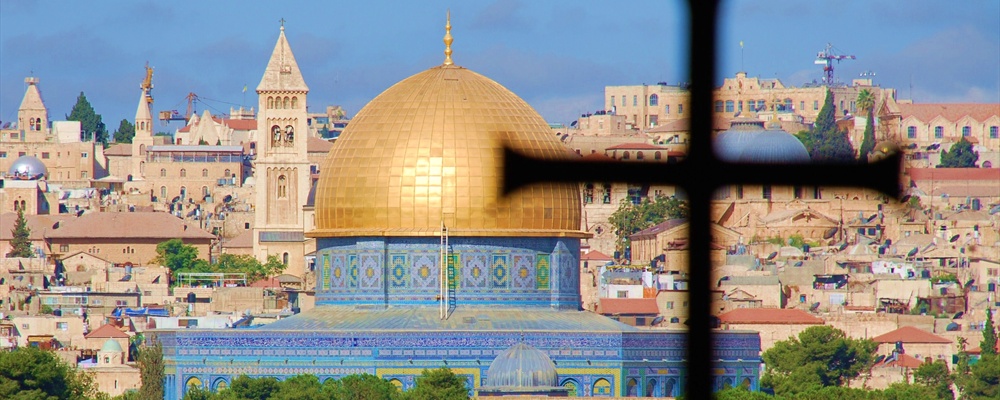
Jerusalem
( 1 user review )Jerusalem (Hebrew: ירושלים Yerushalayim, Arabic: القدسal-Quds) is a holy city to three religions (Judaism, Christianity, and Islam), whilst being the modern capital of the State of Israel and the country`s largest city. The City of Gold, as it has come to be known in Hebrew, is a fascinatingly unique place where the first century rubs shoulders with the twenty-first century, each jostling for legitimacy and space, and where picturesque "old" neighborhoods nestle against glistening office towers and high-rise apartments. It is one of those places which has to be seen to be believed.
Understand
Located in the Judean Mountains between the Mediterranean Sea and the Dead Sea, Jerusalem is considered holy to the three major Abrahamic religions: Judaism, Christianity, and Islam. It is the holiest city in Judaism and the spiritual center of the Jewish people since the 10th century BCE, the third-holiest in Islam and is also home to a number of significant and ancient Christian landmarks. It is also a city with a very violent past, as it has been fiercely contested between Christianity and Islam during the brutal Crusade era. While the city has had a large Jewish majority since 1967, a wide range of national, religious, and socioeconomic groups are represented here. The walled area of Jerusalem, which until the late nineteenth century formed the entire city, is now called the Old City and became a UNESCO World Heritage Site in 1982. It consists of four ethnic and religious sections — the Armenian, Christian, Jewish, and Muslim Quarters. Barely one square kilometer, the Old City is home to several of Jerusalem's most important and contested religious sites including the Western Wall and Temple Mount for Jews, the Dome of the Rock and al-Aqsa Mosque for Muslims, and the Church of the Holy Sepulchre for Christians.
Surrounding the Old City are more modern areas of Jerusalem. The civic and cultural center of modern Israel extends from western Jerusalem toward the country's other urban areas to the west, while areas populated mostly by Arabs can be found in the northern, eastern and southern districts. Jerusalem became Israel's capital upon its independence and Jerusalem was united after the 1967 War when Israel captured East Jerusalem.
Archaeological findings prove the existence of development within present-day Jerusalem as far back as the 4th millennium BCE, but the earliest written records of the city come in the Execration Texts (c. 19th century BCE) and the Amarna letters (c. 14th century BCE). According to Biblical accounts, the Jebusites, a Canaanite tribe, inhabited the area around the present-day city (under the name Jebus) until the late 11th century BCE. At that point (c. 1000s BCE), the Israelites, led by King David, invaded and conquered the city, expanding it southwards and establishing it as the capital of the United Kingdom of Israel and Judah (the United Monarchy). It was renamed at this time as Yerushalayim (Jerusalem), a name by which it is still referred to today.
King David's reign over Jerusalem ended around 970 BCE when his son Solomon became the new king. Biblical sources state that within a decade Solomon started to build the first of two Holy Temples within city limits — Solomon's Temple (or the First Temple), a significant site in Jewish and Christian history as the last known location of the Ark of the Covenant. The period of the First Temple was marked by the division of the United Monarchy at the time of Solomon's death (c. 930 BCE) when the ten northern tribes, originally part of the Monarchy, split off to form the Kingdom of Israel. Under the leadership of the bloodline of David and Solomon, Jerusalem continued to act as the capital of the southern par of the split, the Kingdom of Judah. Later, with the Assyrian conquest of the Kingdom of Israel in 722 BCE, Jerusalem became the center of a Judah strengthened by the great number of Israeli refugees. In approximately 586 BCE, the Babylonians conquered the Kingdom of Judah including the city of Jerusalem, and the First Temple Period came to an end.
In 538 BCE, after fifty years of Babylonian captivity, the Jews were given permission from Persian King Cyrus the Great to return to Judah so they could rebuild Jerusalem and construct the Second Temple. The construction was completed in the year 516 BCE, seventy years after the destruction of the First Temple. Jerusalem regained its status as capital of Judah and center of Jewish worship for another four centuries, with a considerable portion of that period under Hasmonean rule. By 19 BCE, the Temple Mount was elevated and construction began on an expansion of the Second Temple under Herod the Great, a Jewish client king under Roman rule. In 6 CE, the city, as well as much of the surrounding Palestine, came under direct Roman rule as the Iudaea Province. Still unchallenged, the Roman rule over Jerusalem and the region came to an end with the first Jewish-Roman war, the Great Jewish Revolt, which resulted in the destruction of the Second Temple in 70 CE. Jerusalem once again served as the national capital for the people of the region during the three-year rebellion known as Bar Kokhba's revolt. The Romans succeeded in sacking and recapturing the city in 135 CE and as a punitive measure, the Jews were banned from Jerusalem.
In the five centuries following Bar Kokhba's revolt, the city remained under Roman and Byzantine rule. With the city controlled by Roman Emperor Constantine I during the 4th century, Jerusalem was transformed into a center for Christianity, with the construction of sites such as the Church of the Holy Sepulchre. For most of the time between Constantine's rule and the arrival of the Muslim forces in 638, Jews were banned from Jerusalem. From that point, the rights of the non-Muslims under Islamic territory were governed by the Pact of Umar, and Christians and Jews living in the city were granted autonomy in exchange for a required poll tax (jizya). When Caliph Umar first came to the city, he requested that Sophronius, the reigning Patriarch of Jerusalem, guide him and his associates to the site of the Jewish Holy Temple, whereupon he later decided to build a mosque. By the end of the 7th century, a subsequent caliph, Abd al-Malik, had commissioned and completed the construction of the Dome of the Rock over the Foundation Stone. In the four hundred years that followed, Jerusalem's prominence diminished as Arab powers in the region jockeyed for control.
In 1099, Jerusalem was besieged by the First Crusaders, most of the city's then 30,000 Muslim and Jewish inhabitants, were slaughtered. That would be the first of several conquests to take place over the next five hundred years. In 1187, the city was taken from the Crusaders by Saladin. Between 1228 and 1244, it was given by Saladin's descendant al-Kamil to the Holy Roman Emperor Frederick II. Jerusalem fell again in 1244 to the Khawarizmi Turks, who were later, in 1260, replaced by the Mamelukes. In 1517, Jerusalem and its environs fell to the Ottoman Turks, who would maintain control of after the First World War.
In 1917 after the Battle of Jerusalem, the British Army, led by General Edmund Allenby, captured the city. The League of Nations, through its 1922 ratification of the Balfour Declaration, entrusted the United Kingdom to administer the Mandate of Palestine and help establish a Jewish state in the region. The period of the Mandate saw the construction of new garden suburbs in the western and northern parts of the city and the establishment of institutions of higher learning such as the Hebrew University, founded in 1925.
As the British Mandate of Palestine was expiring, the 1947 UN Partition Plan (Part III) recommended "the creation of a special international regime in the City of Jerusalem, constituting it as a corpus separatum under the administration of the United Nations." However, this plan was never implemented and at the end of the 1948 Arab-Israeli War, Jerusalem found itself divided between Israel and Jordan (then known as Transjordan). The ceasefire line established through the 1949 Armistice Agreements between Israel and Jordan cut through the center of the city from 1949 until 1967, during which time West Jerusalem was part of Israel and East Jerusalem was part of Jordan. In 1949, west Jerusalem became Israel's capital.After the 1967 war, united Jerusalem became as Israel's capital.
Climate
Located on the eastern edge of the Mediterranean Sea, Jerusalem has a Mediterranean climate with hot, dry summers and cool, wet winters.
Winters are very wet, with nearly all of Jerusalem's annual 590 mm (23 in) of precipitation occurring between October and April. The coldest month is January, with an average high of 12°C (53°F) and an average low of 4°C (39°F). Sub-freezing temperatures are not an everyday occurrence, but do happen, and the city will get occasional snowfall during the winter, though it usually only lasts a matter of hours rather than days. However, every once in a while the city will experience significant accumulating snow.
Summers are hot and dry as a bone with virtually no rainfall between the months of May and September. Temperatures will generally approach around 30°C (88°F) during the day and cool to around 15°C (59°F) at night. Being near the desert, there is often a big difference between the day and night temperatures, and even the hottest days can turn into chilly nights. Spring and fall are mild, with minimal rainfall and pleasant temperatures.
Religion
In addition to many secular Israelis and foreigners, Jerusalem is considered home by large numbers of adherents to three of the four Middle Eastern monotheistic faiths: Judaism, Christianity, and Islam. Adherents of these faiths have tended historically to congregate in various neighborhoods of the city, with considerable overlap.
Language
Due to its ethnic make-up the main languages spoken in Jerusalem are Hebrew in West Jerusalem and Arabic in East Jerusalem. Most people throughout the city speak sufficient English for communication, particularly Jews that have immigrated from the US and Europe. Additionally, many Charedi (strictly Orthodox) Jews speak Yiddish, and there is a significant number of French-speaking Jews. Smaller groups of Jews speak Dutch and Spanish. There is a large number of Russian immigrants of Jewish background, so it is not uncommon to see signs in Russian or hear Russian language radio. Finding English speakers in West Jerusalem is not at all difficult, but English speakers in East Jerusalem are much harder to find except in Arab businesses near Jewish settlements and in areas trafficked by tourists, such as the neighborhoods surrounding Damascus Gate.
Getting there
By plane
Israel's main entry point for the international traveller, the newly built Terminal 3 at Ben Gurion International Airport (TLV) , named after Israel's first Prime Minister, is situated near Lod and next to the highway linking Tel Aviv and Jerusalem (highway no. 1). The airport, referred to by locals as Natbag - its initials in Hebrew - comprises all the usual amenities expected from a first class airport and contains one of the world's largest duty-free shopping malls for an airport of its size. Ben Gurion Airport acts as the base for El Al , Israel's national airline, and is also served by over 50 international air carriers. Travel from the airport to the centre of Jerusalem takes 40-50 minutes and depending on traffic conditions often more. It is advisable to budget at least an additional 2 hours on top of your pre-flight check-in time to ensure timely arrival and completion of security procedures.
The most efficient way to get to Jerusalem from Ben Gurion is via a Sherut shared taxi (a 10+ seater minibus), which you can find just outside the arrival area. Signs will point you towards the Sherut services. The ride is a fixed cost of NIS 50 and will take you almost anywhere in Jerusalem, but as with all taxis in Israel, be sure to confirm the rate with the driver before you leave.
Security is extremely stringent at Ben-Gurion Airport, and is especially suspicious of travelers with Muslim names or visas from Islamic countries in their passports. Expect to be stopped and questioned for several hours if this is the case, both on the way in and on the way out. It would be wise to have some phone numbers of local contacts for security officials to call to verify your reasons for visiting.
By train
Jerusalem is connected to Israel Railway network, but the service, which follows the route of the 1892 Jaffa-Jerusalem line, is noted for its scenery rather than speed.
From Tel Aviv, you should take the train to Jerusalem, with stops en-route at Lod (where you can make connections to Beer Sheva, Ashkelon, Rishon LeZion and Ben Gurion Airport), Ramla, Bet Shemesh, and arrive at Jerusalem's Malkha train station, which is inconveniently located at the south of the city. The old train station in the city center is currently out of service. But plans are underway to build a new rail connection to the Central Bus Station (Takhana Merkazit), thus making it a true intermodal terminal. A few trains also stop at the Biblical Zoo station, but it is within walking distance from Malkha station.
Journey time from Tel Aviv Merkaz/Savidor station to Malkha station is about 1.30 hour. There's one train per hour from 5.54 to 19.54 on weekdays, 5.25 to 14.25 (15.25 in summer) on Friday, 20.10 (22.10 in summer) on Saturday. Trains from Malkha depart on weekdays from 5.44 to 21.41 (the last one only as far as Lod), on Friday from 6.00 to 13.56 (14.56 in summer), on Saturday at 19.47 (21.47 in summer).
From the train station there are several buses to destinations in and around Jerusalem. To downtown take bus #4 or #18, and ask for "MerKaz Ha-ir" or for "Kikar Tzion" (Zion Square). To the central bus station, #5 is the fastest, though the #6 and #32 are alternatives. Taxis are also available.
A high-speed rail link connecting Jerusalem to Tel Aviv in half an hour and Ben Gurion Airport in 20 minutes is under construction and is scheduled to open in 2011. Its terminus will be an underground station (80m below surface) near the central bus station and Binyaney Ha'uma (convention center). Until then, use the train if you have plenty of time and want to see nice mountain scenery, but not if you are in a hurry.
By bus
Bus services to Jerusalem from Ben Gurion International Airport and most Israeli cities are frequent, cheap, and efficient. Egged is almost the only operator of intercity buses to/from Jerusalem, as well as the entire urban network. To check on these services look at its website or dial *2800 from any phone. Most intercity buses arrive at the so-called Central Bus Station (CBS) at the western edge of Jaffa street, the city's main road. From there it's a long but enjoyable walk (or short local bus trip) along Jaffa Road to the centre of West Jerusalem and further on to the Old City. Inter-city buses arrive and depart inside the station building. City buses outside of it, both in front of the building and on Sederot Shazar. When exiting the CBS, turn left to walk towards the city, or turn right to find the city buses. (Finding your way when you leave the CBS for the first time can be a confusing experience, since there are almost no city maps around. There is a city map on the large square opposite the CBS, on the right side, towards Sederot Shazar.). Note that busses do not run on Shabat - from half hour before sunset on Friday till after sunset Saturday. Hours vary by the time of year - In December (winter solstice) Shabat start as early as 3.55PM and end at 5.15, while in June (summer solstice) Shabat start as late as 7.10 and end on 8.30.
By shared taxi
Public buses do not run during Shabbat (between sunset on Friday and sunset on Saturday, roughly speaking), during which your only option is a sherut (shared taxi). These depart from Tel Aviv's Central Bus Station and Ben Gurion Airport, and charge a small surcharge on top of the normal bus fare. As of mid-2006 a sherut costs 20 NIS (25 NIS at night) and drops you off downtown, not far from Zion Square. A sherut from the airport to anywhere in the city costs about 50 NIS. The company offering the sherut service is called "Nesher".
Shared taxis are also the best option if travelling from Jerusalem to Palestinian cities, especially Ramallah and Bethlehem. The main bus station (On Sultan Suleiman street, next to the Rockfeler Museum) serves the surrounding Palestinian towns and villages, including Abu-Dis (Line 36), and Bethlehem (Line 124), those buses are colored mostly in blue strips . Another bus terminal, on Nablus road (Straight on from the Damascus gate) serves Ramallah, other main Palestinian cities, and there is a shared taxi direct to the Allenby bridge (The border crossing with Jordan), costing 30 NIS and 3 NIS for luggage (sited in Al-Souq Al-Tijaree "The commercial souq" not far away from the main bus station). All Palestinian shared taxis are very cheap, 4.00 NIS for the surrounding villages, 5 NIS for Abu-Dis and 6.00 NIS for Ramallah.
There are no Israeli sherut lines within Jerusalem (unlike most Israeli cities). But there are sherut lines to Tel Aviv and Beit Shemesh as well as the airport.
The bus operator in the eastern Jerusalem is called Al-Safariat Al-Mowahadda "The united traveling service". Note that the taxi is called "Moneet" in Hebrew, and called taxi in the Palestinian side. Both differ from the shared taxi, which runs fixed routes for many people like a bus. Moneet or Taxi is a private taxi.
Traveling around
By taxi
Cabs are plentiful in the city of gold, but be warned as the drivers may try to rip you off by "taking the scenic route" or charging a fixed price instead of on the meter. Insist that the driver turns on the meter (Mon-eh) and you should have no problems.
By bus
The most effective public transportation option is currently in the form of buses. Take into consideration that the intercity bus system is quite confusing, especially for a tourist. Even people living in Jerusalem their whole lives won't be able to help you, if they aren't familiar with the bus route you're interested in using. This is caused by the lack of any official bus route maps, and to the fact that bus routes and numbers tend to change rapidly. Buses are run by "Egged" Company. Most buses are dark green, but you'll see the older red and white buses too.
To use the bus, you pay the driver as you board the bus. All bus rides are at a fixed price of NIS 6.20- about $1.60 (March 2010), no matter how many stops you stay on for. You may pay in change or bills. Entrance to the bus is from the front door only, and exit is usually from the back. If you're planning to use the bus a few times, it is wise to ask to driver for a "Cartisiya", which is a 10 ride punch ticket for the price of 8 rides. This option is useful when traveling more the one person, or if you think you'll use the bus a few times.
Once you pay the driver, a ticket will come out of the gray calculator next to the driver. You must take and keep the ticket, for proof to the conductor, which tends to come and check.
Notice, that the ticket you receive can be used 75 minutes from the moment its produced. You may transfer with it to any intercity bus, as long as you board the bus before the 75th minute, which is printed on the ticket.
If you'd wish to transfer with the "Cartisiya", make sure to ask the driver (as he's punching it) for a "Cartis Ma'avar". Without it you won't be able to transfer to other buses without another punch in your "Cartisiya".
The Jerusalem City Tour (Bus #99), intended for tourists, does a loop of pretty much the whole city and costs NIS 45 adults and NIS 36 children for a one-day pass.
Below is a summarized overview of which bus to take to get from certain places to other places. Printing this list, and the map, will be very helpful.
-
Central Bus Station
-
Buses towards the city leaving directly in front of the CBS (going left / east)
- 1 to Kotel HaMa'aravi: CBS - Sarei Yisrael - Malchei Yisrael (Geulah) - Meah Shearim - Shaar Shechem (Damascus Gate) - Kotel HaMa'aravi (Western Wall)
-
Buses away from the city leaving directly in front of the CBS (going right / west)
- 7 to Har Chotzvim: Kiryat Mattersdorf - Sorotzkin - Kiryat Tzanz - Ezrat Torah - Har Chotzvim
-
Buses towards the city leaving from Sederot Shazar (the main road across from the CBS; cross under the road through the tunnel) (going left / east)
-
11 to Ramat Shlomo: CBS - Machaneh Yehudah - HaNevi'im (Bikur Cholim hospital) - Strauss (Geulah) - Yechezkel - Shmuel HaNavi - Golda Meir - Ramat Shlomo
-
15 circle bus: CBS - Sarei Yisrael - Malchei Yisrael (Geulah) - Meah Shearim - Shaar Shechem (Damascus Gate) - Yaffo (municipality offices, central post office) - Kikar Tzion - Strauss (Bikur Cholim hospital) - Malchei Yisrael (Geulah) - Sarei Yisrael - CBS - Givat Shaul - Har Nof
-
35 to Ramot: CBS - Machaneh Yehudah - HaNevi'im (Bikur Cholim hospital) - Strauss (Geulah) - Yechezkel - Shmuel HaNavi - Golda Meir - Ramot
-
-
-
Other Routes
-
1: CBS - Sarei Yisrael - Malchei Yisrael (Geulah) - Meah Shearim - Shaar Shechem (Damascus Gate) - Kotel HaMa'aravi (Western Wall)
-
2: Har Nof - Givat Shaul North - Hamag - Kiryat Mattersdorf - Sorotzkin - Kiryat Tzanz - Ezrat Torah - Golda Meir - Shmuel HaNavi - Shaar Shechem (Damascus Gate) - Kotel HaMa'aravi (Western Wall)
-
7: Kiryat Mattersdorf - Sorotzkin - Kiryat Tzanz - Ezrat Torah - Har Chotzvim
-
11: Har Nof - Givat Shaul North - CBS (Shazar) - Machaneh Yehudah - HaNevi'im (Bikur Cholim hospital) - Strauss (Geulah) - Yechezkel - Shmuel HaNavi - Golda Meir - Har Chotzvim - Ramat Shlomo
-
15 circle bus: Har Nof - Givat Shaul North - CBS (Shazar) - Sarei Yisrael - Malchei Yisrael (Geulah) - Meah Shearim - Shaar Shechem (Damascus Gate) - Yaffo (municipality offices, central post office) - Kikar Tzion - Strauss (Bikur Cholim hospital) - Malchei Yisrael (Geulah) - Sarei Yisrael - CBS (Shazar) - Givat Shaul North - Har Nof
-
16: Bayit VeGan - Yefeh Nof - Kiryat Moshe - Givat Shaul North - Hamag - Kiryat Mattersdorf - Sorotzkin - Kiryat Tzanz - Hannah - Bar Ilan - Sanhedria - Golda Meir - Har Chotzvim - Ramot
-
18: CBS-Yaffo-David HaMelech-Derech Beit Lechem-Emek Refaim-Yochanan Ben Zakkai-Yossi Ben Yoezer-Kanei HaGalil-Yehudah HaNasi-Yaakov Pat-Kenyon Malcha
-
21: replaces the 14 into Talpiot
-
29: Har HaMenuchot - Givat Shaul Commercial Area - Givat Shaul North - CBS (Shazar)
-
35: Har Nof - Givat Shaul South - CBS (Shazar) - Machaneh Yehudah - HaNevi'im (Bikur Cholim hospital) - Strauss (Geulah) - Yechezkel - Shmuel HaNavi - Golda Meir - Ramot
-
38: Jewish Quarter Parking lot - Yafo Street - Davidka Square - Yafo Street - Jewish Quarter Parking lot.
-
Note Buses in Jerusalem (Egged) do not run on Shabbat (30 minutes before sunset on Friday until at least 30 minutes after sunset on Saturday), nor on other religious holidays. That doesn't apply for Al-Safariiat Al-Moahaddih. This list is incomplete
By light rail
A light rail line is currently under construction and will be operational sometime between 2010-2012. It will link the north-eastern neighborhoods to the south-western neighborhoods through the city center. Additional lines are planned to be constructed later. The streets on which the construction works are going on may be hard to travel, especially by car - in particular, Yaffo street.
By foot
Much of Jerusalem is walkable (check before going) and is pleasant to walk. The Old City has to be toured by foot, not only because it is more impressive this way, but also because many of the lanes and alleyways are inaccessable to cars.
See
Jerusalem has an amazing array of attractions for the traveller to see. The following are some of the must-sees. For more attractions see individual district articles.
-
The Israel Museum is the largest museum in Israel. The Museum contains the "shrine of the book" where the dead sea scrolls are kept. It also has a large scale model of Jerusalem in ancient times. Normally it has a large archeology and art section but because of major renovations these sections are closed until 2010. Entrance fee is 45 NIS.
-
Yad Vashem is Israel's Holocaust museum. There is no fee to enter but tours can cost about 30 NIS. Children under ten are not allowed to enter the museum proper but they go to other areas.
-
The garden tomb on Nablus Road, east jerusalem marks the traditional spot where Jesus was killed. The tomb is located in a big garden which is luch and a good breakaway from the hussle and bussle of East Jerusalem. Must do.
-
The Biblical Zoo is one of Israel's most popular tourist sites, in West Jerusalem
-
Visit the Belzer Rebbe's tish on Friday night in Charedi Jerusalem (men only!)
-
Old City — the atmospheric historical core of Jerusalem surrounded by Ottoman period walls, filled with sites of massive religious signficance and a bustling approach to life.
-
The most important Jewish Holy Place is the Temple Mount (Har Habayit) and the Western Wall (Hakotel Hamaaravi) in the Old City, which is part of the outer retaining wall of the Temple, built 2000 years ago.
-
Church of the Holy Sepulcher is the end of the Via Dolorosa (Way of the sorrows) in the Christian quarter of the Old City. It is the most holy Christian spot in the world. Built by the crusaders in 1099, it is Jerusalem's number 1 site for pilgrims.
-
The Temple Mount in the Muslim quarter of the old city is the third most important site in Islam, and a showcase for Islamic architecture and design from Umayyad to Ottoman times that continues as an important religious and educational centre for Muslims to the present. It is crowned by the magnificent Dome of the rock. Encompassing over 35 acres of fountains, gardens, buildings and domes, the temple mount houses the following Islamic landmarks: : Al-Aqsa Mosque (The Far Mosque) is the point from where the prophet of Islam, Mohammad, is believed to have ascended to heaven. : Qubbat Al-Sakhra (Dome of the Rock) located in the middle of the sanctuary opposite of the Al-Aqsa Mosque, is probably the most known landmark of Jerusalem with its golden dome and octagonal blue walls that are adorned with Arabic calligraphy of Koranic verses. It is currently closed to non-muslims. It is also labelled the most amazing Islamic building in the world
-
The Jewish quarter in the Old City was completly re-built in 1969 after the 1967 Arab-Israeli War. It still holds many ancient masterpeices such as the Cardo (700 BC), Burnt House (70 AD), and Western Wailing Wall (50 BC). All of which are among the most holy jewish sites in the world. Definitely worth a visit, especially the western wall.
Things to do
Most hotels will provide tours. Bus # 99 provides an orientation to the whole city and can provide a perspective of the city. It cost 40 Shekels and starts at the Egged Central Bus Station. You can get on and off all day and is run and looks like the double-decker tour buses in London.
The Western Wailing Wall/underground is a tour that is well worth your time. The female guide there was well versed in the history of the wall and the explanation of the first two temples and the subsequent construction of the Dome of the Rock will create a great picture of the conflict between relevant cultures. A reservation should be made through your hotel. But individual walk-ins can sometimes be squeezed in.
Eat
Jerusalem, being the multicultural city that it is, has food from all countries, cultures, and tastes. Besides the ubiquitous falafel stands, there is European, Ethiopian, Medditeranean, and Middle Eastern foods. There is also a large ranges in prices from the ritzy and exotic Emek Refaim to falafel stands centered around Machaneh Yehuda and the Central Bus Station. A good rule of thumb is to look for restaurants filled with Hebrew or Arabic speaking locals.
If you keep kosher Jerusalem will be a wonderful place to visit. In the Jewish sections of the city almost everything is kosher. However you should still check for the paper on the wall. The Jerusalem rabbinute issues Kashrut certificates that are good for 3 months at a time, and color coded. If you don't see it displayed do not hesitate to ask the staff. If they don't show you one its a good sign to move along. The certificate should be stamped "Basari" (meat) or "halavi" (Dairy) in Hebrew. The current certificates are cream colored with red print for dairy and pinkish-red for meat restaurants. These will be good until Sept 22 (Rosh Hashana) after that the rabbinute will put up new certifications. Note it is not unusual for it to take a few days to get the new certificate up. It is usually the policy of the Jerusalem rabbinute to not certify a chain store as kosher unless all the branches in the city of Jerusalem are kosher. For this reason McDonalds and some branches of Aroma in Jerusalem are not certified kosher.
American
-
Burgers Bar. A small chain of stores, one can be found on Emek Refaim St. and another on Shamai St. (near Ben Yehudah St.) Kosher.
-
New Deli, Hillel St and Emek Refaim St. Kosher- 33 Hillel Street,
-
Meat Burger, Hillel St. Burger, fries, and drink NIS 35-45. Not Kosher.
Arabic
-
Abu Shukri, This is regarded as one of, if not the, tastiest and most affordable in Jerusalem. It is located where the Via Dolorosa and Al Wad Road meet. It's renown for its hummus and falafel. Go early on Saturday. That's when lines of Israelis wait for tables on afternoons. Not Kosher
-
Hashipudia, 6 Ha-Shikma St. This restaurant exclusively prepares skewers of lamb, beef, hearts and livers, geese and chicken breast, and goose liver. Also, it bakes fresh Iraqi pita bread every afternoon. Not Kosher, it is Halal though.
Israeli
-
The Eucalyptus, The Artists Colony by the old city, biblical Israeli cuisine best known for its "shir hashirim (song of songs)" tasting menu. There is a view of the David citadel from the restaurant and the chefs are internationally acclaimed. Reservations recommended. Kosher.
-
Matameh Tziona, French Hill Town Center, Small family run restaurant. Hailed by university students as some of the best food in Jerusalem. Falafel, Shawarma, Schnitzel, and many other delicious dishes. open Sunday through Thursday, 10:00 a.m.–10:00 p.m. Kosher.
-
Shalom Felafel, 36 Bezalel Street, open Sunday through Thursday, 11:00 a.m.–8:30 p.m. Kosher.
-
Try me'orav yerushalmi (lit. "Jerusalem Mix"), a pita or laffa bread stuffed with a tasty mix of spices and grilled meats and chicken innards. One famous place is Steakiyat Hatzot, Agrippas St., near the Mahaneh Yehuda Market. Check out the photos on the wall.
-
Melech Shawarma, Agripas and King George. The best shawarma in Jerusalem by far. A real treat. And only 15 NIS for one of them. Best deal all around. Kosher.
-
HaSabikh, past the Ben Yehuda midrachov on the right. Home to the tastiest Sabikh in the city, in pita made fresh at the restaurant.
-
Falafel Hamelech (Falafel King) at the intersection of King George and Aggripas st, right in the center of downtown. Cheap and fair. A falafel in pita with a soda will be 14nis. Be sure, however, to try your Falafel with "amba", a mango-based condiment that you cannot get outside of the region easily! Kosher Rabbinute
-
Steakiat Tzeziahu Talpiot, israeli "Steakiat" place, which is to say meat on skewers. About 45-60NIS per person but very good. Also they will fill your table with various Israeli salads and fresh bread. Amazing value! Kosher Mehadrin l'Mehadrin
-
From Gaza to Berlin (55 Gaza St, ) at the corner of Gaza St and Berlin St, with a second branch downtown. A small and friendly place selling hummus and falafel, has excellent Kube of different types.
-
Versavee Just next to the Jaffa gate, next to the Imperial Hotel is a lovely bistro/cafe/bar. A pleasant atmosphere, good prices and the staff are friendly and all speak English. Try the local Palestinian beer called Taybeh - only NIS 15. One of the nicest and cleanest cafes in the Old City.
Mizrachi
- Marvad Haksammim, King George St and Emek Refaim St. With its large serving sizes this is one of the best places for Yemenite food in the city. Be sure to try the Kuba soup (red, sweet, and spicy with round meat dumplings), Saluf (think large, thick, and crispy burritos), Shakshuka (poached eggs in tomato sauce), and Malawakh (doughy sweet pancake). Entrees are NIS 15-40. Kosher.
Ethiopian
Ethio-Israel experience, Turn left on Havatzelet St. when going on Yafo St. towards the Old City. Then turn right on Elyashar street and follow it to the left. In the little cul-de-sac is an incredible little restaurant. You won't be able to stop eating.
Drink
There is plenty of nightlife in Jerusalem. For clubs, the best way is to have a "proteksya", or connection with someone. This way of knowing someone who works at the door or a friend is the easiest and best way to have a great time in Jerusalem.
-
Artel Jazz Club , Heleni Hamalka 9, Russian Compound, Every night live jazz concert at 22:00. Great food. Good selection of beverages. Free Wireless Internet.
-
HAOMAN 17, Open Thursday and Friday nights. Opens around 12:00AM, closes well after sunrise., Rachov Haoman #17, Talpiyot Industrial Area, HAOMAN is one of the top rated night clubs in the world. DJs from around the world entertain beautiful people into the morning hours with live house-techno music. The long line prefers well dressed, attractive people. Flashing a University ID helps you get through the crowd on a busy night. Go with friends, as the club in in an industrial area (not the safest place to be alone at night). Do not pick fights with regulars, as people have been assaulted in the past. The most fun Thursday night in Yerushalayim.
-
Old Friend Rock Bar , Jaffa 19, Safra Square, Straight-up rock bar, with a mixture of subculture clientele, students and expats. Guinness, Hoegaarden and Tuborg are available on tap. Different nights feature classic rock, metal, hardcore, alternative, ska, punk and rockabilly. Open daily. Happy hour every day expect Friday, 20:30-22:00, two-for-one drinks.
-
Uganda , Aristobolus 4, Russian compound, Coffee, beer, music and comic books.
-
Rosa, Hadekel 2, Mahane Yehuda Market, Small neighborhood pub at the outskirts of the Ben-Yehuda Market. Cheap alcohol, good music.
-
Noc, Jaffa 31 in the alley, Feingold Courtyard
-
Stardust , Rivlin 6, The Stardust is one of Jerusalem's oldest pubs. The pub was established in '96, and is named after a David Bowie album. It's crowd is a mix made of students, tourists, artists and young people. The music is mainly Alternative, mostly from England, and the bar prices are extremely good. The Happy Hour starts at 16:30 and lasts for five hours. All major sports event, including English Premier League, Bundesliga, World Cup and Champions League are shown there on a big screen.
-
Syndrome, Hillel 18, by Aroma, Live rock music every day.
-
Yankees Bar, Solomon 12 in the alley, Beit Hadfus Courtyard
-
Sira , Ben-Sira 4, Jerusalem hardcore pub. Live DJs every night.
-
Daila , Shlomtzion 4, Multi-cultural space for independent art and social change.
-
Prague, + , + , 18:30 till the last customer, Rivlin 6 , An east european bar restaurant offering some great etnic food together with big amount of draught beers and some exclusive attractions .
-
Birman (Musical Bistro), +972-50-2990059, daily 19:00-late night, Dorot Rishonim ST, pedestrin mall, downtown Jerusalem, Musical Bistro - Live music every night. For art, music & good food lovers. Open daily 19:00 till late hours Friday 13:00 – Sabbath Closed on SAT.
-
Izen Bar, , Dereh Beit Lehem 7, Old Train Station, IZEN Bar has for the past 3 years been the highest rated bar in Jerusalem. It's open Thursday, Friday & Saturday (sometimes also earier in the week). It appeals to the crowd with it's lovely enviroment.Outdoor area, a various numbers of DJ's playing popular high beating tunes into the early morning. Also known for it's happy atmosphere, entertainment of dancers, drummers, saxofonists +++ and different theme night's. A delicious assortment of dishes & snacks is served all night. It's recomendable to come early too avoid long lines.
-
Angelica, (02) 623-0056, Shatz 7, any bus to king george street, exit at cafe joe, the only bar in jerusalem serving classic cocktails using freshly muddled fruits and vegetables. elegant atmosphere and the best drinks in town.
Sleep
The Old City has a diverse mix of small hotels, religious hospices and cheap hostels that might appeal to the traveller.
West Jerusalem has a blend of B&Bs, guesthouses, small hotels and large hotels - all the way up to 5-star accommodation, including the famous King David Hotel.
- Jerusalem Gate Hotel , +972-2-5008500, 43 Yirmiyahu St, Jerusalem 94467, Israel , Hotel located at the entrance to Jerusalem with elegant lobby, bar, coffee shop and banquet halls. The cuisine is international with Glatt Kosher LeMehadrin Rabbinate Supervision; the hotel hosts wedding and Bar Mitzvah receptions and cocktails, as well as family parties, conferences and seminars from 10 to 550 guests.
Budget
While Jerusalem's Old Town may boast the cheapest accommodation, it is by no means the friendliest. Be forewarned.
-
Petra Hotel and Hostel , No curfew, 1 David Street, Just inside Jaffa Gate with magnificent views across the Old City to the Dome of the Rock. Breakfast included.
-
New Swedish Hostel, David St 29, Jaffa Gate, from 80 LE.
-
Jerusalem Hostel , No curfew, 44 Jaffa Rd, Clean hostel with a convenient central location on Zion Square.
-
Hebron Hotel (formerly known as Tabasco Hostel), No curfew or lock out, 8 Aqabat Teqreh Street
-
Heritage House , Office:, Office:, 7AM-9AM, 5PM-midnight Sunday-Thursday; 7AM-9AM, 2PM-5PM, 10PM-midnight Friday; 8AM-10AM, 2PM-midnight Saturday, for men: 2 Ohr Hachaim Street, for women: 7 HaMalach Street, The Heritage House Jewish Youth Hostel is inside the Jewish Quarter. Learning opportunities and Shabbat hospitality are available to guests and non-guests.
-
Ramsis Hostel, +972 -02-6271651-, No curfew, 20 Hanevim Street, near damascus gate, Very friendly and the location is outstanding, right on the very frontline between east and west, with the bars in West Jerusalem only a 5 minute walk away. Wireless internet included in price. The manager's name is Mike and he can speak English, Hebrew and Romanian.
-
Jerusalem Panorama Hotel , +972 2 6284887, P. O. Box 19768, Jerusalem 97400
Mid-range
-
Harmony Hotel Jerusalem , 6 Yoel Moshe Salomon Street, Nahalat Sheva, This Jerusalem Hotel is in the heart of Jerusalem in the main tourists area
-
Jerusalem Inn , 7 Horkanos St., One of the best value B&B in Jerusalem. Located at city center just steps from all the major sites and night life of the city. Israeli buffet breakfast and free Wi Fi included. Price includes a complete buffet breakfast, all rooms have a private bath and toilet, a balcony, TV, airconditioning, mini-bar and a safe.
-
Montefiore Hotel , 7 Shatz Street., One of the The best value hotels in Jerusalem. Located at city center with easy access to all the major sites and night life locations. Special chef restaurant. Free Wi Fi included, highly equipped rooms.
-
Park Hotel , 2 Vilnay Street., Under the shade of the new Calatrava Railway Bridge, Park Hotel stands adjacent to modern Jerusalem's International Convention Center and is only a short walk from the Israel Museum, the Hebrew University's Givat Ram campus, the Knesset (home of Israel's Parliament) and the Government’s most important buildings.
-
Colony Suites, Hananya St., German Colony, Stylish, self-contained, serviced vacation apartments for short term accommodation. Each apartment is renovated and equipped with all the amenities for a comfortable stay. The perfect location, around the corner from the supermarket, close to all major hotels and walking distance to synagogues and the old city. url=
-
St. Andrew's Scottish Guest HousePO Box 8619 1 David Remez Street Jerusalem 91086 Israel email: info@scotsguesthouse.com Tel: Fax: . Single: 90 USD. No curfew. Overlooks the Hinnom Valley and located between the picturesque Mishkenot Shaananim/Yemin Moshe district and the bustling Emek Refaim. Easy ten/fifteen minute walk to the downtown area as well as to the Old City. The Guest House is situated closest to Zion Gate.
-
Capitol Hotel , Salah Eddin Street, P. O. Box 19459, Jerusalem, The Capitol Hotel welcomes you to an ideal base for travelers. Centrally located two minutes walk from the Old City Walls. It is also at a walking distance from the major historical and biblical sites of the Holy City. Capitol is a deluxe hotel that offers 54 guest rooms.
-
Crowne Plaza , 972-3-5390808, Givat Ram, at the city's entrance, Luxurious and well-known hotel. Offers breathtaking views of the city.
-
Rimonim Jerusalem , 972-2-675-2222, 24 Shachrai St, Bait Va'gan
Splurge
-
The King David Hotel , , 23 King David St., *King David Hotel* Jerusalem is an Israel landmark and one of the most famous and luxurious hotels in Jerusalem, The flagship of the Dan Hotels. Marvel at the fabled skyline of the Old City. overlooks the famous Old City, and is within walking distance of major historic sites and the capital’s newest commercial centers. a Jerusalem landmark and Israel's most famous and luxurious hotel. The perennial host to world leaders and celebrities and flagship of the Dan Hotels.
-
The Dan Panorama Jerusalem Hotel , , 39 Keren Hayesod St., Located in the center of Jerusalem within comfortable walking distance of all the major sites in both the Old and New Cities. Somewhat old and faded with dated rooms, and a dingy lobby. Filled with tour groups of your aunt Sadie and her friends. Very nice service. Mediocre food.
-
The Dan Boutique Jerusalem Hotel , , 31 Hevron Rd., The Dan Boutique Jerusalem Hotel is a hotel with a contemporary interior design combining motifs from both East and West. Located opposite Mount Zion and the Old City Walls, in proximity to many tourist attractions and near Jerusalem's old Turkish railway station complex, which is being transformed into a world center for animation and the entertainment hub of Jerusalem.
-
Novotel Jerusalem , 9 Saint George St., Not one of Novotel's finest hotels, located a very short walk from the Wailing Wall. Some refurbishment is needed.
-
The David Citadel Hotel , , 7 King David St., Brand new, very luxurious and modern. Close to the brand new luxury shopping mall and very close to the Jaffa Gate
-
Mamilla Jerusalem Hotel , 02-5482222, 11 King Solomon St., A 5-star luxury hotel located in the City Center near the Old City few minutes walk from Jaffa Gate, Tower of David and Alrov Mamilla Avenue
-
Grand Court Jerusalem Hotel , 972-2-591-7777, 15 Saint Georges St, Jerusalem, Grand Court is a new hotel features 442 luxurious rooms including family rooms and specially designed rooms for handicapped guests. On Eastern side:
-
American Colony Hotel , , Nablus Road (**located about 10 minutes' walk from the Old City of Jerusalem and near to the commercial and shopping areas of West and East Jerusalem**)
-
The Inbal Jerusalem Hotel , 972-2-675-6666, 1-877-443-7443, Liberty Bell Park, 3, Jabotinsky St. 92145 Jerusalem, A five star deluxe experience in the heart of Jerusalem. It’s not just about feeling comfortable, it’s about feeling a sense of belonging and familiarity at every moment and in every one of our 283 luxury rooms and suites. The Inbal hotel is a doorway to Jerusalem's grand culture, tradition and history.
Buy
Jerusalem is big on t-shirts of all shapes, colors and designs, often with good evidence of Jewish humour being present! If shopping in the Old City's markets, where almost anything can be found, be prepared to haggle.
Judaica is also a popular choice of purchase. The Old City's Jewish Quarter is particularly good for this, as is Mea Shearim, however, dress modestly.
Safety
Due to high security levels throughout Israel, any unattended packages will be assumed to be explosive in nature and will be destroyed. Standard procedure requires that a bomb squad treat all such packages as live ordnance. A large majority of unattended packages turn out to be souvenirs that have been left by preoccupied or absent minded tourists.
Despite alarming news headlines, Jerusalem is safe for tourists. Street crime is nearly nonexistent, although pickpockets may work in crowds in the Old City, particularly by Arab children.
There are, however, a few areas in the city where it is important to be mindful of one's dress, religion, and time period visiting. Here are some guidelines:
-
Dress. When visiting any holy site or religious neighborhood one should dress modestly. For men this means long pants, a closed shirt with sleeves, and a head covering. For women, it means a skirt that falls below the knee, a shirt with elbow-length sleeves and no exposed cleavage or stomach. This applies to churches, mosques, and synagogues, as well as the Temple Mount (Noble Sanctuary) and Western Wall (the plaza by the Wall is essentially an open-air synagogue, and there are mosques on the Temple Mount). When in religious neighborhoods as well, such as Mea Shearim, it is advisable to follow these guidelines.
-
Religion. Although all of Jerusalem is accessible to members of all religions, it is not always safe for those obviously of the Islamic faith (e.g. wearing a hijab or kufi) to enter Jewish concerntrated areas, especially on Sabbath, as well as those obviously of a Jewish faith (e.g. wearing a kipah) to enter Muslim concentrated areas, especially at night.
-
Time Non-Muslims are not allowed on the Temple Mount (Noble Sanctuary) during times of Muslim prayer. During Shabbat and Jewish holidays, one should not publicly use electronic devices or smoke in any synagogue, at the Western Wall, or in any ultra-Orthodox ("hareidi") Jewish neighborhood.
Security checks can be frequent, especially when entering hotels, cinemas/theaters and shopping areas. It is wise to carry some identification.
On the whole, theft is not a large-scale problem. To minimize risk, however, do not leave valuable objects inside a car or in full view in your hotel room. There are many ATMs throughout the city and credit cards are widely accepted, so there is no need to carry large amounts of cash.
Visitors may notice a large amount of military personnel on the streets of Jerusalem, especially around certain sites. Every citizen must perform military service in the Israeli Defense Force (IDF) as soon as they reach the age of 18. Many servicemen and civilians carry firearms (handguns) in public. It was, in fact, an off-duty soldier who stopped the Palestinian terrorist driver of the tractor in the incident in July, 2008. There are always large concentrations of soldiers around bus stations, as they are usually on their way to or from their bases. when going to the Western Wall it is quite common to see soldiers praying. Sometimes you might see an Israel Defense Forces "swearing in ceremony" near the Western Wall. This is quite common because of the historical and religious importance the Western Wall has to the Jewish People.
As of 2007, bombings and other terror attacks have virtually ceased in Jerusalem. Israeli strikes and Palestinian attacks are not major worries. Tourists have never been the target of attacks and most have occurred well away from tourist sites. Naturally it is important to remain vigilant and alert, as outlying cities have experienced uprisings and bombings (Hebron, Ramallah, and most recently, Tel Aviv in February of 2004).
In the case of injury or incident, Police services can be reached by dialing 100. Ambulance services can be reached by dialing 101.
Districts
Jerusalem is a big place, and can be divided up into a few districts.
-
The Old City and its Walls form a UNESCO World Heritage Site. This tiny ancient city is home to holy sites for Jews, Christians, and Muslims, and is truly breathtaking.
-
West Jerusalem is the Jewish-Israeli part of Jerusalem, also known as New Jerusalem, it is the modern commercial heart of the city, having become the focus for development in the capital from the time of Israeli independence in 1948 to the reunification of the city with the Six Day War in 1967.
-
East Jerusalem is the Eastern side of Jerusalem, home to most of Jerusalem's Arab population.
-
Me'a Shearim is the area of Jerusalem inhabited largely by ultra-Orthodox Jewish people, moderate dress is required. The area looks like an old Polish town from 1800.
-
The German Colony is a West Jerusalem neighborhood south-east of the city center. It's a wonderful place to drink coffee and to eat in restaurants. You may hear more "Anglos" speaking English than Hebrew on these streets.
-
Ein Kerem is a (relatively) secluded neighborhood in West Jerusalem that maintains village atmosphere. It is surrounded by picturesque hills dotted with olive and cypress trees, home to artists and sculptors who have opened numerous galleries. Several churches are built on the site believed to be the birthplace of John the Baptist.
-
Talpiot is a largely commercial and industrial neighborhood in the southern part of West Jerusalem.
Learn
Jerusalem offers a wide range of educational programmes, which include:
-
The Rothberg International School — part of the Hebrew University of Jerusalem.
-
Yad Vashem runs a number of educational courses treating the subject of the Holocaust and Genocide Studies.
-
Al Quds Univeristy offers many different programs to foreign students, as well as special summer courses to improve your Arabic skills.
-
All Nations Cafe organizes summer caravans where internationals can learn about the social, political and cultural aspects of life in and around Jerusalem.
-
AISH Hatorah Offers walk-in interactive discussions and lectures that cover topics such as: Being Jewish in today's world, defining the major tenents in Jewish thought from a rational perspective, and exploring major themes and practices in Jewish spirituality.
-
Yeshiva Machon Meir Address: 2 Hameiri Ave., Kiryat Moshe, Jerusalem 91340, Israel: Shiurim in weekly tora portion (parasha), religious rules (halacha), jewish ethics (mussar). Jewish outreach. Instruction languages: hebrew, english, russian
Contact
Phone
The area code prefix for Jerusalem is: 02. Israel's country code is: 972.
Public telephones take prepaid phone cards which can be purchased at post offices, shops and lottery kiosks. They are available in the following denominations: 20 units (13 NIS), 50 units (29 NIS), or 120 units (60 NIS). Calls made on Saturdays and Friday evenings are 25% cheaper than the standard rate.
For international calls prepaid cards can be bought from post offices, including the new VOIP calling card "x-phone".
Israeli Post offices are available for service from 8 AM–12 PM and 2 PM–6 PM, Sunday through Thursday.
-
The central post office for West Jerusalem is located near the head of Jaffa Road, close to the municipality ofices. Open until 7 PM.
-
In the Old City, post offices can be found in the Armenian Quarter near the Jaffa Gate, diagonally opposite the Tower of David Museum, as well as the Jewish Quarter on Plugat Ha-Kotel near the Broad Wall.
-
A post office is in a small shopping mall on King George Street, immediately south of Jaffo street.
Israel uses the red British "pillar" mail boxes in some areas of Jerusalem, a reminder of the previous British Mandate.
Internet cafes
The most common price for internet cafes in Jerusalem is 15 NIS per hour.
-
Cafe Net , , 3rd floor (Departures) of the new Central Bus station (232 Jaffa Road)
-
Netcafe, Call for opening times, as these vary. Closed Shabbat, 9 Heleni Hamalka Street, Russian Compound
-
Ali Baba, Via Dolorosa, Old City, Free tea and coffee
Note however that most hostels should offer free Wi-Fi.
Wireless Internet
There is now a wireless internet connection in some of the streets in Jerusalem. The service is free of charge and can be accessed in the center of the city (Nov. 2004). The streets are: Ben-Yehuda, Nahalat Shiva, Shlomzion Hamalka. There is also wireless internet in the food court of the central bus station and in most chain coffee shops. Free access is also available at the airport.
Contact & location
1 Review
Add your review
The photos displayed on this page are the property of one of the following authors:
Or Hiltch, Ilya Borovok, Orly Yahalom, LutzP, David Poe, gnuckx cc0, tmesis, Simply Boaz, Alistair
Some photos courtesy of:
 ,
,  . The photos provided by Flickr, Panoramio are under the copyright of their owners.
. The photos provided by Flickr, Panoramio are under the copyright of their owners.
This travel guide also includes text from Wikitravel articles, all available at  View full credits
View full credits
Vidimian, Claus Hansen, Ryan Holliday, silvertravel, Yitz Ostrov, Stefan Ertmann, Zac, Silvertravel Ltd., Erez, Ravikiran Rao, Amir E. Aharoni, cz, arnie, Paul Glen, Spectre, Jani Patokallio, All Nations Cafe, Nitsan, Thomas DiGennaro, Zvika Ben-Haim, Peter Fitzgerald, rmrfstar@gmail.com, David, David Cohen, Ben, Dave Stanley, Andrew Haggard, daniel.vandalen@gmail.com, Evan Prodromou, Gobbler, Zachary Kessin, Tim Sandell, David Bjorgen, Jacob, LB, Niels Elgaard Larsen, Todd VerBeek, Colin Jensen, Chris Waldrip, Louis Pasek, Mark Jaroski and Yann Forget, Spdwriter, Texugo, Globe-trotter, Burmesedays, Snibley, Tatatabot, Inas, ChubbyWimbus, Ekedalen, Erezico, Morph, Jon513, Chenle, Liorv, Episteme, Pjamescowie, Rodeojava, W66LinkBot, Littlemerman, Pashley, WindHorse, Jonboy, Brendio, Gloomy, Oren Shatz, Nzpcmad, PierreAbbat and Drummerweb
This travel guide also includes text from Wikipedia articles, all available at  View full credits
View full credits
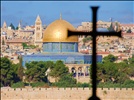

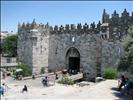

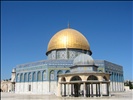

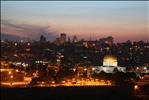


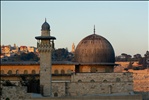
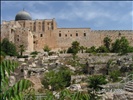

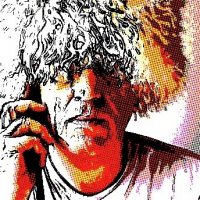




I liked
Imagine a nation that has been through thousands of years of both spiritual and physical conflicts through out its time. Israel, the Holy land to some of the major religions in World. The Christains, Muslums, Jews all see this city as a becon of hope and faith. This city has influnced and helped create the major religions known today. Science and Biblical refrences have different opionions on the City. Like when it was first created and inhabited by ancient peoples. Scients believe through studies that the city was created around the 4th millenuim a long time before Moses led the Isrealits to the city. Archological studies have been made many times on the city for its ancient history and culture of the people back then. The spiritual wars that jerusalum has hosted were very bloody unstable front. When it when Isreal was first united by King David and constint war with there neighbors. After Jesus was born in Jerusalum new religions were created and they saw this city as the holy land and a very spiritualy place. This became an issue with two of the major religions of the time, Christains, and Muslums. At the time the Muslums controled the nation, but the Christains weren't treated fairly and had to pay higher taxes. Then the Holy war began, The Crusades. Many battles were faught in the Crusades and control of the city interchanged until the last war the Muslums finally took complete control of the City. Today Jerusalm is still a Holy place and is also a torrist attaction for many people across the globe. The religion in Israel is the major ones in the world, Christains, Muslums and Jews. Outside of the old city is more modern stuctures and buildings. Isreal today is a united nation and has currently finished its war with Egypt and is now having some trouble in the realtions with the U.S. This website has really helped me learn about the history and the culture of Israel. Many of the historical facts are very interesting and I had leanred more on the Economy, Modernization and Major realigions in Isreal.I disliked
Nothing